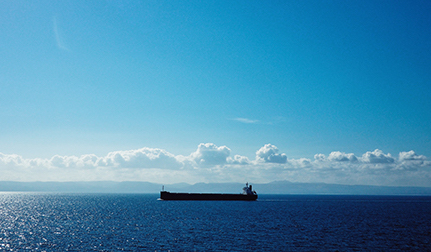(LONDON) — New draft regulations to cut the carbon intensity of existing ships have been approved by the Marine Environment Protection Committee (MEPC) of the International Maritime Organization (IMO).
This builds on current mandatory energy efficiency requirements to further reduce greenhouse gas emissions from shipping. The MEPC also agreed on the terms of reference for assessing the possible impacts on states, paying particular attention to the needs of developing countries, in particular small island developing states (SIDS) and least developed countries (LDCs).
The draft amendments to the MARPOL convention would require ships to combine a technical and an operational approach to reduce their carbon intensity. This is in line with the ambition of the initial IMO GHG strategy, which aims to reduce carbon intensity of international shipping by 40 percent by 2030 compared to 2008. The amendments were developed by the seventh session of the Intersessional Working Group on Reduction of GHG Emissions from Ships (ISWG-GHG 7), held as a remote meeting Oct. 19-23.
The draft amendments will now be put forward for formal adoption at the MEPC 76 session to be held in 2021.
“Considerable further work on the implementation of the measures is still ahead of us, but I am confident that the IMO spirit of cooperation, shown during the past years, will enable swift progress with the development of technical guidelines and a Carbon Intensity Code, as well as the essential further work on the comprehensive assessment of impacts of the measures on developing countries, SIDS and LDCs,” said IMO Secretary-General Kitack Lim. “I express my gratitude to all Member States that have indicated a commitment to supporting these efforts.”
He said the approved amendments were important building blocks without which future discussions on mid- and long-term measures will not be possible.
The progress in developing the short-term measures follows the timeline as set out in the initial IMO GHG strategy. The strategy proposed that short-term measures should be those finalized and agreed to by the committee between 2018 and 2023.
Draft MARPOL amendments
The draft amendments would add further requirements to the energy efficiency measures in MARPOL Annex VI Chapter 4. Current requirements are based on the Energy Efficiency Design Index (EEDI) for newbuild ships, which means they have to be built and designed to be more energy efficient than the baseline; and the mandatory Ship Energy Efficiency Management Plan (SEEMP) for all ships. The SEEMP provides for ship operators to have in place a plan to improve energy efficiency through a variety of ship-specific measures.
The draft amendments build on these measures by bringing in requirements to assess and measure the energy efficiency of all ships and set the required attainment values. The goal is to reduce the carbon intensity of international shipping, working toward the levels of ambition set out in the initial IMO strategy on reduction of GHG emissions from ships.
The set of amendments includes the technical requirement to reduce carbon intensity, based on a new Energy Efficiency Existing Ship Index (EEXI); and the operational carbon intensity reduction requirements, based on a new operational carbon intensity indicator (CII).
The dual approach aims to address both technical (how the ship is retrofitted and equipped) and operational measures (how the ship operates).
Attained and required Energy Efficiency Existing Ship Index (EEXI)
The attained Energy Efficiency Existing Ship Index (EEXI) is required to be calculated for ships of 400 gt and above, in accordance with the different values set for ship types and size categories. This indicates the energy efficiency of the ship compared to a baseline.
Ships are required to meet a specific required Energy Efficiency Existing Ship Index (EEXI), which is based on a required reduction factor (expressed as a percentage relative to the EEDI baseline).
Annual operational carbon intensity indicator (CII) and CII rating
The draft amendments are for ships of 5,000 gt and above (the ships already subject to the requirement for data collection system for fuel oil consumption of ships) to have determined their required annual operational carbon intensity indicator (CII). The CII determines the annual reduction factor needed to ensure continuous improvement of the ship’s operational carbon intensity within a specific rating level.
The actual annual operational CII achieved (attained annual operational CII) would be required to be documented and verified against the required annual operational CII. This would enable the operational carbon intensity rating to be determined. The rating would be given on a scale – operational carbon intensity rating A, B, C, D or E – indicating a major superior, minor superior, moderate, minor inferior, or inferior performance level. The performance level would be recorded in the ship’s Ship Energy Efficiency Management Plan (SEEMP).
A ship rated D for three consecutive years, or E, would have to submit a corrective action plan to show how the required index (C or above) would be achieved.
Administrations, port authorities and other stakeholders as appropriate are encouraged to provide incentives to ships rated as A or B.
Review mechanism
The draft amendments would require the IMO to review the effectiveness of the implementation of the CII and EEXI requirements by Jan. 1, 2026 at the latest, and, if necessary, develop and adopt further amendments.
Next steps
The draft amendments can now be adopted at the MEPC 76 session to be held in 2021.
The MARPOL treaty requires draft amendments to be circulated for a minimum of six months before adoption, and they can enter into force after a minimum of 16 months following adoption. The amendment procedures are set out in the treaty itself.
– International Maritime Organization

